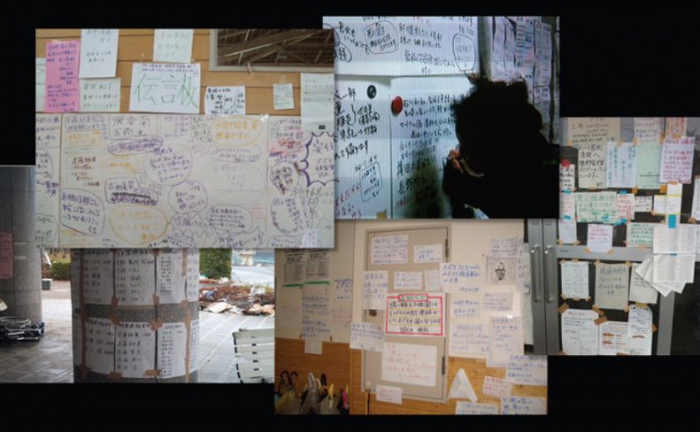Publics in Crisis – Production, Regulation and Control of Publics
Publics in Crisis – Production, Regulation and Control of Publics
in/compatible publics
Panel with Anthony Iles (uk) + Rachel Baker (uk), Liza Tsaliki (gr) and Norifumi Ogawa (jp)
Moderated by Krystian Woznicki (de/pl)
Riots in Great Britain, uprisings in Greece, crisis in Japan – what do these social eruptions have in common? The world system is in turmoil – a process that not only disrupts the fragile order of the global South but more and more aggressively also those walled gardens composing the industrialised world. Suddenly we are talking about failed states located inside exclusive clubs such as the G8 and the Euro-17. Before we are able to understand the implications of this far-reaching transformation, we notice new authoritarian trends in politics foreclosing democratic processes.
In this time of social crisis we have to ask about the potential of social media. After all it is a strong collaborative grassroots quality that qualifies them as platforms for social change. With respect to the walled gardens in crisis, this panel wonders: What are seminal practices and applications of social media? What is their disruptive potential in increasingly authoritarian media landscapes?
Individual Presentation Descriptions
Norifumi Ogawa
Japan is an island nation surrounded by ocean, and on the edge of some continental plates.
This means that natural disasters such as earthquakes or tsunamis often occur, therefore there are many and strict standards to keep buildings and infrastructures safe. It is enable to satisfy an energy demand by domestic resources, so we Japanese chose to operate nuclear power plants. Currently the percentage of generation capacity of nuclear power plants comes up to 30%. 11th of March 2011, a huge earthquake (magnitude 9) occurred in Japan.
The tsunami caused by an earthquake struck the northeastern coastal town and harbor, killing a large number of people. The height of the tsunami amounted to the fifth floor of the building in the large place. Then, the tsunami also struck nuclear power plants at the coastal area. The tsunami, which had exceeded safety standards, destroyed the power supply system of Fukushima Daiichi nuclear power plant. As a result, even now we are facing the serious situation because the nuclear power plant couldn’t be stopped. In the aftermath of the accident, government's action and announcement were so slow that an anxiety for radioactivity had gradually spread among citizens. Many parents with young children left Fukushima to protect them. Some people have begun to measure radiation dose because human beings couldn’t recognize it directly. As a father of two daughters, I also bought an instrument to measure radiation dose at Tokyo, and launched a website to share the information. What would have people done after this huge disaster? In this presentation, I’d like to talk about the movement in a disaster. It happened on a social web site, which have put citizens in contact with other citizens.
(Image: Norifumi Ogawa)

